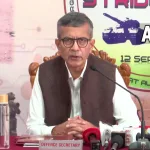Without any doubt, artisans in Kashmir are the last hope to preserve the rich cultural heritage, both tangible and intangible. Over the years they have depicted our cultural diversity through their skills and commitment. Nonetheless, it neither changes the fact that several arts /crafts in Kashmir are dying a slow death nor promises any concessions. An awkward quandary as it has become, people of Kashmir have no clue about it. The handicraft industry or the popular product ‘Kashmiri Shawl’ has its own tale to tell while being entangled in collective domains of economics and aesthetics. The West has an eye for a fine specimen, and such a product fetches good money. But then how many craftsmen are actually benefitted due to these across the countries transactions? If it is not the far West, it is the upper income classes in our society that somehow still rate and value the craft, consider it exquisite. And lastly, it is the buyer who hails it as a mere status symbol than look at it with keen interest and admiration. We have a range of products representing the antiques on the up-side and a small utility product on the down-side. In between is the buyer-seller loyalty, which as we are aware is quite messed up. Thanks for the effort, we have GI (Geographical Indication) tag for authenticity now, but is it enough? GI tags can only serve a purpose when the craftsmanship would continue. It would be surprising to know that the government and responsible functionaries are unaware about the conditions of local artisans/craftsmen. Their numbers are decreasing, their units are decreasing and so is the art and craft dying. Their children are least associated with it now than ever. If the government with all its power has shunned from the responsibility, why would the artisans who often are subjected to acute crises, mostly financial, provide their shoulders? It is not only for cultural heritage, but the UT seems to have forgotten that among the small scale industries, handicrafts has been an important contributor. It is indeed simple to understand, an average artisan or craftsman, how the policies have helped him so far. When there would be no one left to weave, on what would the tag of authenticity be put on? If the arts and crafts are to be saved, it is the source that has to be firmly secured first. Micro financing and easy banking services but with results can help, till the time we develop admiration for our local crafts and decorate our habitations with them rather than imported murals and tapestries we consider luxurious.
Arts and crafts
Sign Up For Daily Newsletter
Be keep up! Get the latest breaking news delivered straight to your inbox.
By signing up, you agree to our Terms of Use and acknowledge the data practices in our Privacy Policy. You may unsubscribe at any time.
Leave a Comment Leave a Comment
Stay Connected
Latest News
Recent Posts
- Nepal: Death toll from Gen Z protests rises to 51 in Nepal; one Indian among dead
- Issue in Manipur ongoing for long, good PM Modi going now: Rahul Gandhi
- Op Sindoor a reality check, certain capability gaps noticed: Defence Secretary Rajesh Kumar Singh
- J-K: Section 163 of BNSS continues in Bhalessa after Mehraj Malik’s arrest
- Letter warns of bomb threat, Delhi High Court proceedings disrupted: Sources





